Effective October 1, 2017, the USDA Animal and Plant Health Inspection Service (APHIS) will no longer provide free plastic ear tags and applicators as part of the National Scrapie Eradication Program. APHIS will continue to provide metal tags free of charge to producers and others who handle sheep and goats. Contact your USDA Veterinary Services office or 1-866-USDA-TAG for more information on free metal tags, to make changes to your existing scrapie flock number or to obtain a scrapie flock number.
Producers also have the option to purchase their own official ear tags/devices from approved tag companies. Official identification devices, including ear tags and injectable transponders, must be approved by APHIS as being sufficiently tamper-resistant for the intended use, have good retention, and provide a unique identification number for each animal.
Approved USDA Scrapie Ear Tags
Premier 1 offers approved tags in several styles: Q-flex® 1.5, Q-flex® 3 and Q-flex® 5, 7X and MiniTags. Color is up to you (except blue, which is reserved for USDA use). All official National Scrapie Eradication Program identification tags have the U.S. shield printed on them.
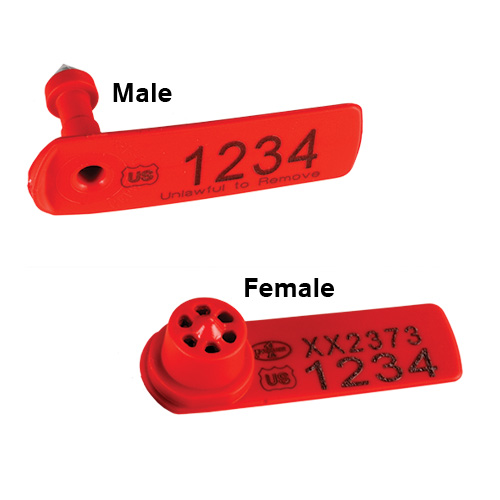
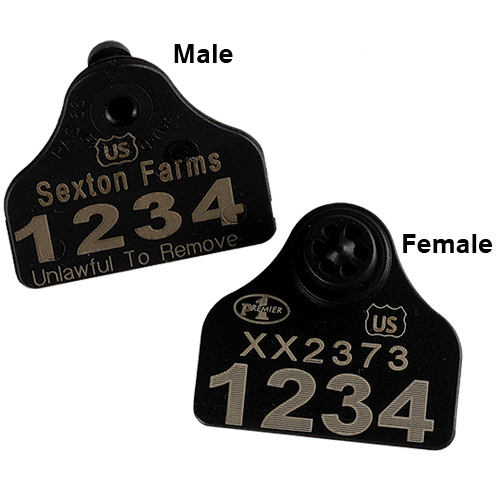
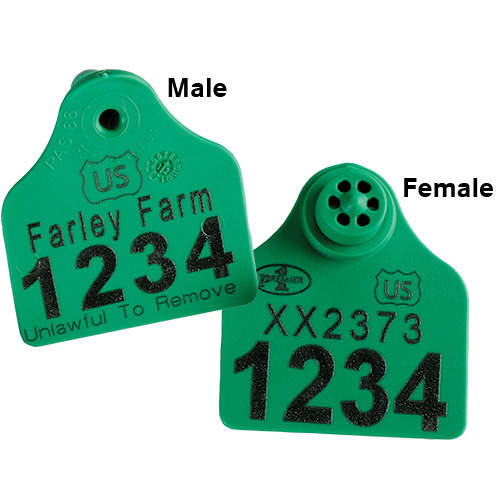
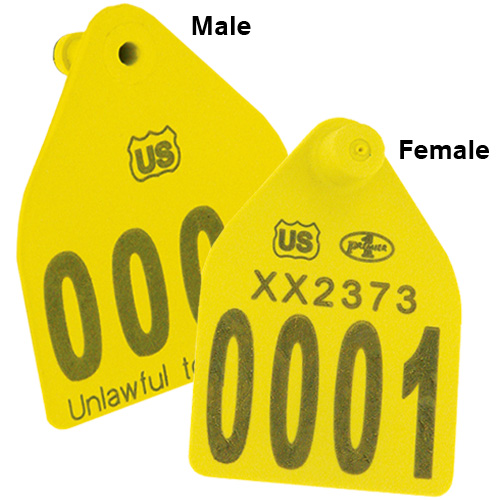
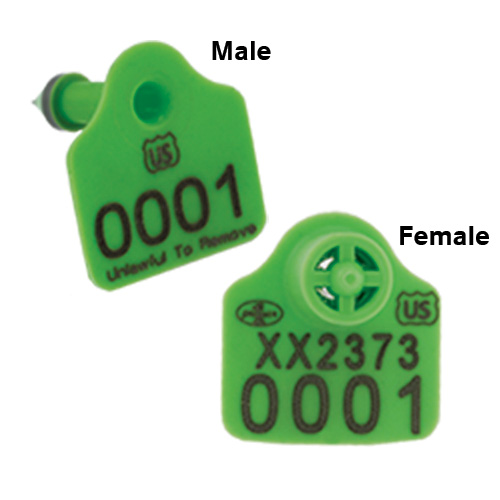
Animals Requiring Identification
The animals listed below are required by Federal* and/or State regulations to be identified as part of the National Scrapie Eradication Program when they move between states as part of interstate commerce or if ownership changes. Some states have ID requirements which are stricter than the federal requirements, so the exceptions listed below do not apply in all states. For information on each State’s identification and movement requirements, contact the State Veterinarian’s office.
Sheep
- All sheep, EXCEPT
- Sheep under 18 months of age in slaughter channels
- Castrated sheep under 18 months of age
Goats
- All goats, EXCEPT
- Low-risk commercial goats** exempted by the State in which they reside
- Goats in slaughter channels
- Castrated goats
*For more details on exemptions to the Federal sheep and goat identification requirements, review the regulation at www.aphis.usda.gov/animal-health/scrapie
**The definition of a low-risk commercial goat is: a goat that is raised for fiber and/or meat; is not registered or exhibited; has not been exposed to sheep; is not scrapie-positive, scrapie-exposed, or high-risk for scrapie; is not from a scrapie-infected or source herd; and does not reside in California, Colorado, Illinois, Maryland, or Michigan.
An owner may substitute tattooing for an official identification device under certain criteria.
Tips for Tagging
- Sheep and goats only need to be officially identified when leaving the premises or when being sold to another owner.
- Do not buy or sell animals of any age that may be used for breeding or animals over 18 months of age for any purpose unless they are officially identified.
- The preferred placement for eartags is in the left ear to aid in shearing.
About Scrapie
Scrapie is a fatal, degenerative disease affecting the central nervous system of sheep and goats. There is no cure or treatment for scrapie.
The National Scrapie Eradication Program, coordinated by the U.S. Department of Agriculture’s (USDA) Animal and Plant Health Inspection Service (APHIS), has reduced the prevalence of scrapie in adult sheep sampled at slaughter by over 99 percent. However, the cooperation of sheep and goat producers is needed to find and eliminate the last few cases in the United States.
Producers are required to follow Federal and State regulations for officially identifying their sheep and goats. Producers must also keep herd records, showing what new animals were added and what animals left the herd/flock. Download this factsheet which helps producers follow the regulations.
For more information about scrapie or the National Scrapie Eradication Program, please visit the following websites:
- USDA APHIS — www.aphis.usda.gov/animal-health/scrapie
- National Institute for Animal Agriculture — www.eradicatescrapie.org
- American Sheep Industry Association — www.sheepusa.org
- American Goat Federation — www.americangoatfederation.org


